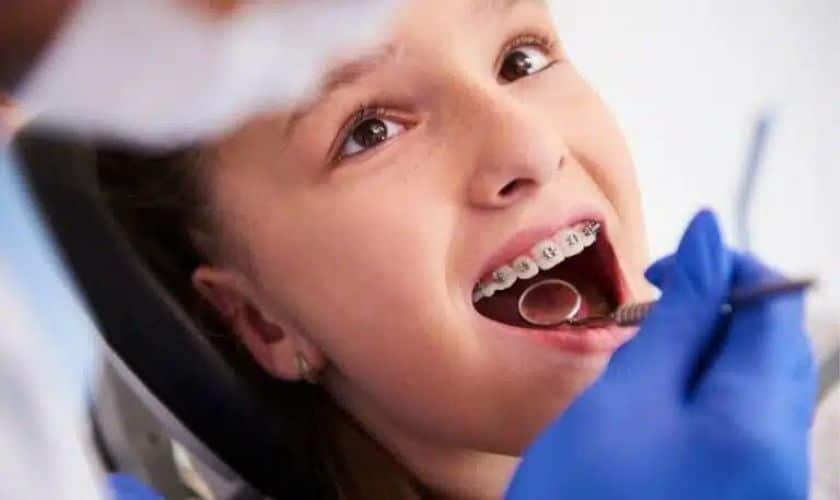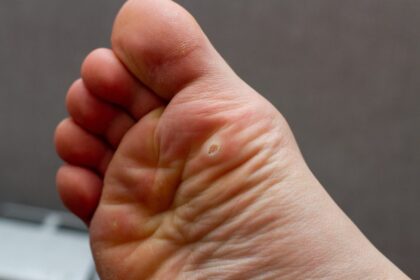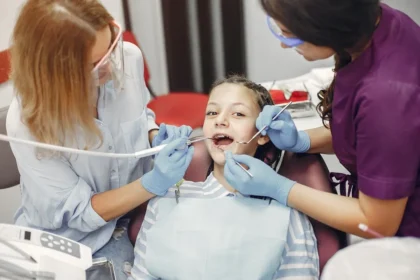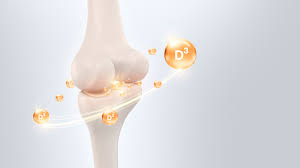Children’s orthodontics focuses on correcting dental alignment and bite problems during childhood and adolescence. Parents may hold misconceptions about when orthodontic treatment begins, what it involves, and who benefits from it. These myths can delay necessary care and create unnecessary anxiety for families. Here is how children’s orthodontics helps parents make informed decisions about their child’s oral health:
Myth 1: Orthodontics Only Helps Adults
This widespread belief prevents many children from receiving timely treatment. Orthodontic intervention is most effective during childhood, when teeth and jawbones are still developing. The American Association of Orthodontists recommends that children visit an orthodontist by age seven. At this age, orthodontists identify potential problems early and develop treatment plans that align with natural growth patterns.
Early treatment addresses issues such as crowding, crossbites, and protruding teeth before they become more severe and difficult to correct. Children’s jaws are more responsive to orthodontic appliances than adult jaws. Growth modification techniques are most effective during active growth periods, making childhood the optimal time for specific corrections.
Myth 2: Baby Teeth Don’t Matter
Parents might assume baby teeth are temporary placeholders that don’t require attention. Primary teeth actually serve multiple functions beyond chewing. They guide permanent teeth into proper positions and maintain space for adult teeth to emerge. When baby teeth are lost prematurely due to decay or trauma, adjacent teeth may shift, blocking the eruption paths of permanent teeth.
Baby teeth also support proper speech development and facial structure. Children who lose primary teeth early may develop speech impediments or breathing difficulties. Orthodontists use space maintainers to preserve room for permanent teeth when baby teeth are lost too soon. This proactive approach prevents the need for more extensive treatment in the future.
Myth 3: Braces Are Too Painful
Modern techniques in children’s orthodontics have significantly reduced discomfort compared to older methods. Today’s braces use lighter forces and more flexible materials. Most children experience only mild soreness for a few days after initial placement or adjustments. This discomfort resembles the feeling after a vigorous workout and responds well to over-the-counter pain relievers.
Orthodontists now offer various comfort options, including self-ligating brackets that require less frequent adjustments. Clear aligners provide another comfortable alternative for suitable cases. Many children adapt quickly to orthodontic appliances and report minimal ongoing discomfort. The temporary adjustment period is far outweighed by the long-term benefits of properly aligned teeth.
Myth 4: Only Complex Cases Apply
Some parents believe orthodontic treatment is reserved for severe dental problems. Orthodontists actually address a wide range of issues, from minor spacing problems to significant bite irregularities. Small corrections made during childhood often prevent larger issues from developing.
Minor issues, such as slight crowding or small gaps between teeth, also warrant professional evaluation. These problems may worsen over time without intervention. Early assessment enables the monitoring of dental development, allowing for timely intervention when needed. Children can benefit from simple appliances or limited treatment phases rather than comprehensive braces.
Find Comprehensive Children’s Orthodontics
Understanding these common myths empowers parents to make better decisions about their children’s orthodontic care. Early evaluation doesn’t always lead to immediate treatment, but it establishes a baseline for monitoring dental development and growth. Many orthodontic problems are easier and less expensive to treat during childhood than in adulthood. Schedule a consultation with a qualified orthodontist to discuss your child’s specific needs and learn about available treatment options. Taking this step today helps set the foundation for a lifetime of healthy, beautiful smiles.









